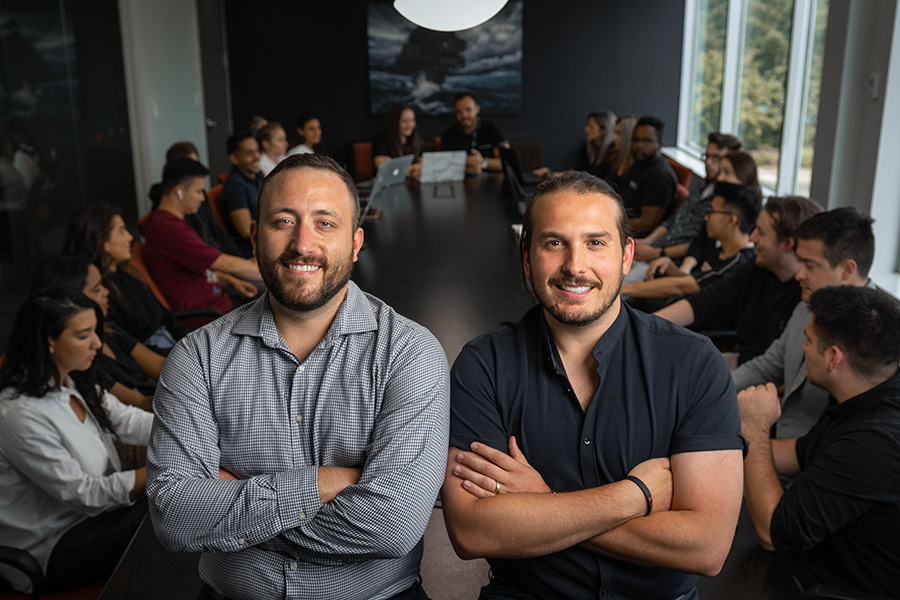Editors Note: Real Leaders is making its archive of magazines freely available to all visitors to our website as part of our contribution to the Covid-19 pandemic. We believe you’ll emerge stronger and wiser when this crisis passes, and we hope our stories will keep you entertained and inspired while we sit out this challenging time. Sign up here and you’ll be instantly redirected to our archive.
Influencer marketing is big business, and it’s only getting bigger. The booming market is expected to reach $15 billion by 2022 (up from $8 billion in 2019). From retail to tourism, healthcare to automotive, entertainment to food & beverages – almost every consumer-facing industry is carving out bigger and bigger portions of their marketing budget to find the right spokespeople to champion their brand, product, or service.
And after all, it makes sense. People have grown weary of a world saturated in advertising. Instead of looking around, our faces are now buried in our phones, glancing at Instagram, checking Facebook, or scrolling through Twitter. In fact, U.S. adults now spend an average of 6 hours per day with digital media.
It was this realization – seeing people obsess over their phone and their Facebook page – that inspired serial entrepreneurs Joe Gagliese (above, right) and Mat Micheli (above, left) to start Viral Nation back in 2014. At the time, the longtime business partners worked as talent managers and agents for some childhood friends who played in the National Hockey League. Recognizing the almost limitless business opportunities for celebrities online, Gagliese and Micheli seized the opportunity and began securing deals for their clients. But just as important, they saw that the online world was starting to produce its own celebrities. “We’d come across these high school kids on platforms like Vine and YouTube, with millions of followers, making wildly original and exceptionally creative content – but they had no representation! It was like the wild west,” explained Micheli. Quickly, Gagliese and Micheli began signing these talented content creators to Viral Nation. Today, the Toronto-based agency has a network of over 100,000 influencers from all around the world.
“Some people see influencer marketing as a fad, but they couldn’t be more wrong,” said Gagliese. “Look at Kylie Jenner, a celebrity influencer, who just became the world’s youngest billionaire. Or look at “Ninja,” a gamer, who has more social media engagement than any professional athlete on the planet! More than Ronaldo. More than LeBron. Let me be crystal clear: this is no fad.”
Further, it’s not just the mega-celebrities who are driving the industry. There’s also plenty of room and opportunity for smaller influencers (often referred to as “micro” influencers or “nano” influencers) – from Mom bloggers to local foodies, comedians, sports fans, travelers, and more. These influencers carry their unique value because their engagement levels tend to be very high, their following is very loyal, their content is very authentic, and they often command a specific geographical area. So, for instance, if a brand wants to open a new store in Charlotte, North Carolina, there is likely a particular group of Charlotte-specific influencers who would be vital to that mission.
Another industry misconception, according to Micheli, is that influencer marketing is just shallow product placement. “This one bugs me because it not only devalues
the massive amount of effort and work influencers do in creating their content, but it also misses the power and impact that these influencers have.” Micheli points to some of the work Viral Nation has done with a Chinese company, Baidu, and their Facemoji app where content creators made Facemojis in support of PRIDE, encouraging young people to be confident and secure with their sexuality, and accepting of others. These Facemoji posts received millions of impressions and loads of engagement – and from all around the world. “Is there a part of the influencer marketing world where some celebrity holds up a bottle of shampoo, and smiles for the camera? Certainly,” added Micheli. “And there’s nothing wrong with that. But like with Baidu and the Facemoji PRIDE campaign, it can also accomplish something deeper.”
In terms of making significant impacts, influencer and social marketing have also begun to seep into the world of politics. In the current U.S. campaign for the Democratic nomination, candidate Elizabeth Warren has taken over 100,000 “selfies” with fans and supporters, and the Bernie Sanders campaign created a #MyBernieStory hashtag that drew thousands of responses and quickly soared to the top of Twitter’s trending list. “Most politicians get it, because they’re essentially influencers themselves, trying to build their number of followers, and create engagement,” explained Gagliese. “Congresswoman Alexandria Ocasio-Cortez is a perfect example of a young politician who has built up a massive amount of influence in a short period by creating content for Instagram, Twitter, and other social channels. Influencer marketing has a huge future in politics because it’s something young people understand, and it’s a way to get people engaged and involved.” Gagliese points to the Obama campaign in 2008 and the Bernie Sanders campaign as two more examples, “Both of those campaigns were heavily driven by influencer marketing strategies, and by young people, especially.” To meet growing demand, Viral Nation plans to launch a political wing of its agency business, sometime in 2020.
Working with brands such as Crayola, Energizer, Twitch, Ubisoft, Tencent, and Match, Viral Nation has managed to scale its business a remarkable 300%-400% year over year, with no outside investment, a testament to both their hard work and the industry demand. But as leaders in their field, Gagliese, and Micheli both want more than profit, they also want purpose. And in that regard, both have been more than a little influential.




































